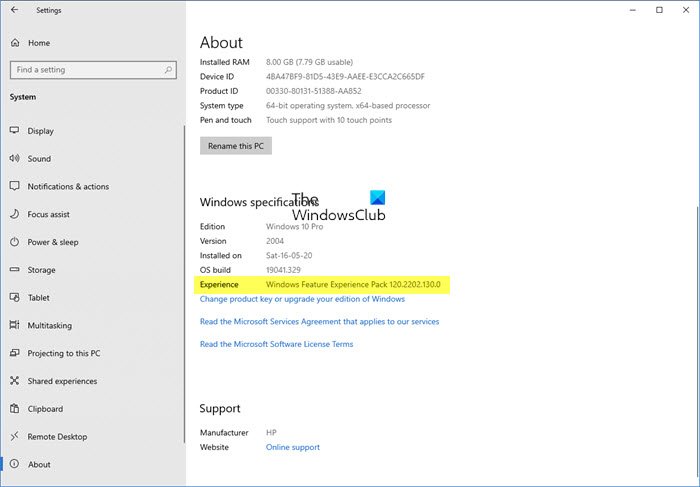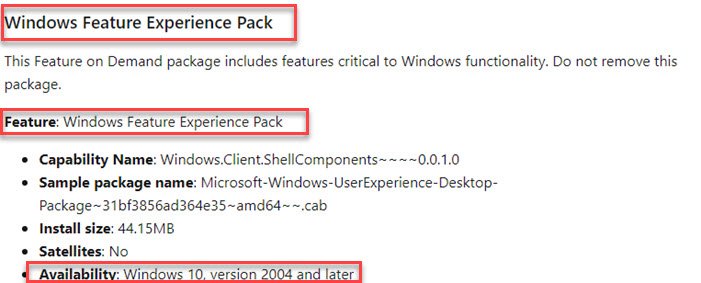If you have been a long-time Windows user, especially since the days of Windows XP and Windows 7, the name Windows Experience Pack may sound familiar. Announced in 2010, it allowed you to create a theme, apply a static picture to Live Messenger, and so on. It was about UI customization. So why are we talking about it now? The feature or product is returning to Windows 11/10 but in a different way. In this post, we will try to explain the Windows Feature Experience Pack.
What is Windows Feature Experience Pack?

Listed as critical to Windows functionality, the pack started becoming available from Microsoft Store in Windows 10 v2004. However, it is in very early stages., and while you can download it on an earlier version of Windows, it doesn’t show anything. We reported about it in December when Windows Dev Teams split into Core OS & Shell Experience team.
Right now, the UI update and Core Update go hand in hand. However, now that the team is split, additional user interface changes may get rolled out with the Windows Feature Experience Pack. It is listed as one Feature on Demand for Windows, Notepad, Paint, PowerShell, Print Management Console, and more. It can be easily noticed in the About section of the computer.
While Microsoft has not clarified anything about it, what looks like is going to be a way to roll out an update for parts of the user interface. Since it’s a pack, we should see more available apps and features. For example, it may become possible to choose not to install some core features like Xbox and Xbox Game Bar as I do not use them at all. Similarly, other features not used by consumers, like the snipping tool, could be skipped. Another wild idea is a customizable shell for the core OS, depending on the device and the consumers.
They are going to back the list of available Features on Demand listed by Microsoft. Notes, Paint, PowerShell, Steps Recorder are now part of the Windows Feature Experience Pack. They come preinstalled in Windows, but what they are pointing to is Windows will become more customizable, and features may not be forced anymore. If you like an application which was always the core of the OS, it can be removed.

Microsoft has also listed FODs that are not preinstalled. These include Accessibility, Developer Mode, Graphics Tools, IrDA, Microsoft WebDriver, Networking tools, and more.
We should learn more about the Windows Features Experience Pack this year as more packages appear in the app. We will soon know whether the feature will stay or whether Microsoft will stick to two updates every year, which could be overwhelming for many.
Now read: What is Online Service Experience Pack for Windows 11?
Leave a Reply